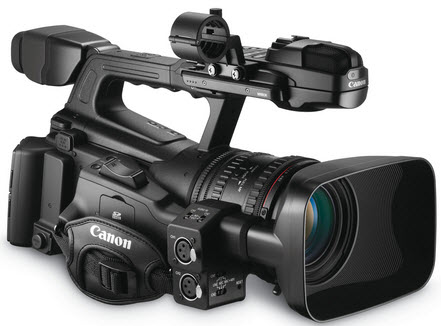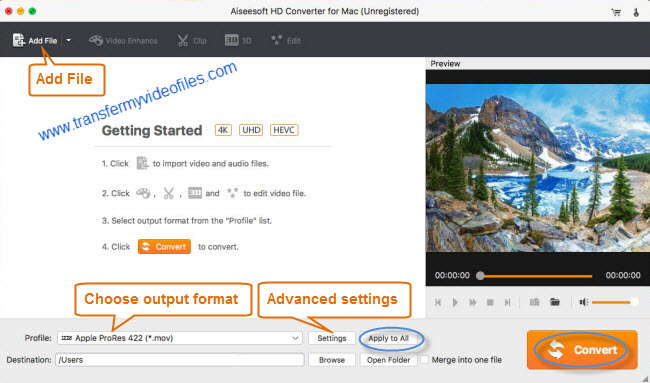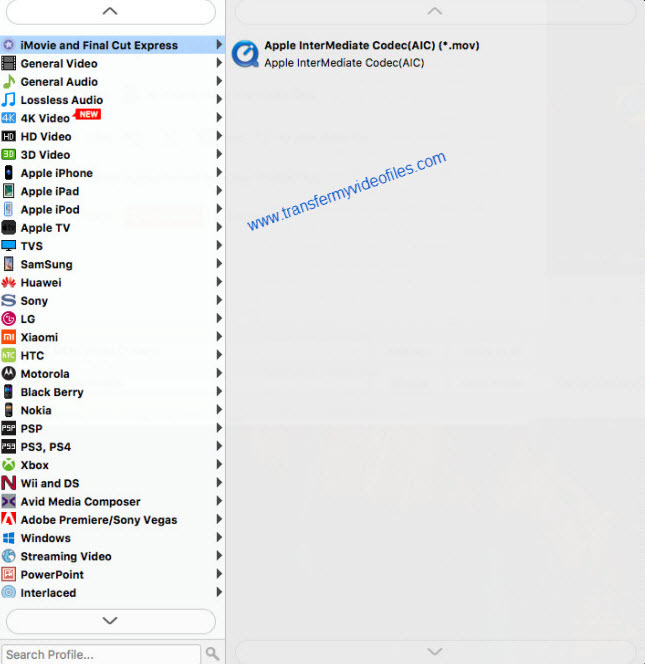If for whatever reason you need a top MXF to QuickTime converter to transcode Canon XF300 MXF footage for use in Apple iMovie, you may wish to read this post. It introduces an easy and reliable converter app to transcode Canon XF300 MXF video to AIC .mov for working in iMovie smoothly.

The Canon XF300 Professional Camcorder uses Material Exchange Format (MXF) for its file structure–an internationally standardized container format for the exchange of video and audio material. Using the MXF format, video and audio can be wrapped into a single file along with important metadata. With MXF, the XF300 will not only benefit from the highest level of compatibility with NLE systems, but also with high-end network systems used by many networks and production studios.
Smooth and efficient workflow is an essential part of the production process. Canon’s XF Codec is supported by the industry’s leading manufacturers: Adobe, Apple, Avid and Grass Valley. This ensures the widest compatibility with existing infrastructure and non-linear editing (NLE) software. However, due to different reasons, people sometimes still need to transcode Canon XF300 MXF footage for editing in NLEs. In our previous post, we have talked about how to import Canon XF300 MXF clips into FCP without folder structure, and here in this post we will continue talking about how to encode Canon XF300 MXF footage to AIC .mov for editing in iMovie with optimum performance.
Here’s what you need
HD Converter for Mac

A quick guide on how to transcode Canon XF300 MXF files to AIC .mov for iMovie
The steps:
1. Start up MXF Converter for Mac as a professional XF300 MXF Converter for iMovie, and then click ‘Add Video’ button to import your source files.

Step 2: Select AIC .mov as output format for iMovie
To convert Canon XF300 MXF files for iMovie, from ‘Profile’ list, choose ‘Apple InterMediate Codec (AIC)(*.mov)’ as output format under ‘iMovie and Final Cut Express’ column.

Important: If you’ve loaded a number of video clips to do batch conversion, please do remember ticking off ‘Apply to All’ option before you start.
Step 3: Custom video and audio settings (optional)
If necessary, you can click ‘Settings’ button and go to ‘Profiles Settings’ panel to modify video and audio settings like video encoder, resolution, video bit rate, frame rate, aspect ratio, audio encoder, sample rate, audio bit rate, and audio channels. 3D settings are also available.
Step 4: Begin Canon XF300 MXF video to AIC MOV Conversion on Mac
When ready, click ‘Convert’ to start format conversion. Once the conversion process is complete, you can click ‘Open Folder’ button to get the generated AIC MOV files for editing in iMovie with optimum performance.
Tips:If you don’t want to wait for the entire conversion process, you can tick off ‘Showdown computer when conversion completed’ and go away to do other things.
Related posts
Panasonic HVX200 P2 MXF and iMovie’8/9/11 workflow
Import Sony RX100 III 60p XAVC S/AVCHD files to iMovie
How to transcode Canon C500 MXF footage to AIC for iMovie?
60p video in iMovie – does iMovie’11 properly handle 60fps video now?
